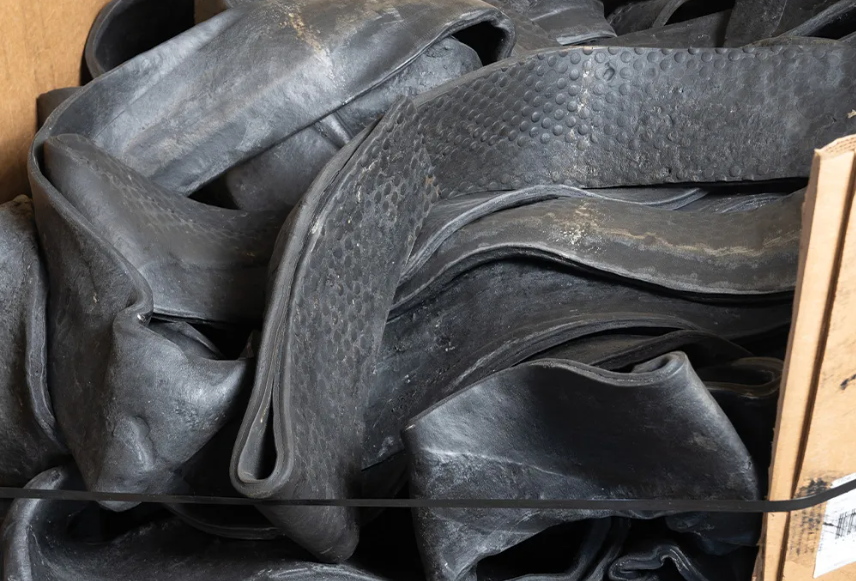The Role of Recycling Services in Tire Manufacturing

The global push toward sustainability has put the spotlight on industries with significant environmental impacts, such as tire manufacturing. As demand for vehicles rises, so does the need for tires—a product that traditionally relies heavily on natural resources and generates considerable waste. However, the integration of recycling services for tire manufacturers has transformed this narrative. By embracing recycling, manufacturers can not only reduce their carbon footprints but also meet strict environmental regulations and achieve long-term sustainability goals.
Understanding the Environmental Impact of Tire Manufacturing
Tire production involves energy-intensive processes and the use of raw materials like rubber, steel, and petroleum-based components. Key challenges include:
Resource Depletion: Extracting raw materials puts a strain on natural resources.
High Carbon Emissions: Manufacturing processes contribute significantly to greenhouse gas emissions.
Waste Generation: Disposing of used tires in landfills creates environmental hazards, including toxic leachates and fire risks.
Without intervention, these challenges worsen the industry’s ecological footprint.
The Role of Recycling in Sustainability
Recycling services play a vital role in reshaping tire manufacturing by offering solutions to reduce waste, conserve resources, and lower emissions. Here’s how:
- Closing the Loop with Circular Economy Principles
Recycling services enable tire manufacturers to adopt a circular economy model by reclaiming materials from end-of-life tires and reintegrating them into production processes.
Recycled Rubber: Pulverized rubber from old tires, known as crumb rubber, is used in new tire production, reducing the need for virgin rubber.
Steel Recovery: Steel wires extracted from old tires are melted and reused in manufacturing.
Carbon Black Reclamation: Carbon black, a crucial ingredient in tire production, can be recovered from pyrolysis processes.
By reusing these materials, manufacturers reduce dependence on raw materials and minimize waste.
- Lowering Carbon Emissions
Recycling significantly reduces the energy required to produce tires. For example, producing rubber from recycled materials consumes far less energy than extracting and processing virgin rubber.
Recycling one ton of rubber can save up to 1,400 pounds of CO₂ emissions compared to traditional methods.
Pyrolysis, a process used in advanced recycling services, converts waste tires into usable oil, gas, and carbon black, further reducing emissions.
- Meeting Regulatory Compliance
Governments worldwide are implementing strict environmental regulations for tire manufacturing and waste management. Recycling services help manufacturers comply with these standards by offering environmentally friendly waste disposal and material recovery options.
Extended Producer Responsibility (EPR) laws in many countries require tire manufacturers to take responsibility for the end-of-life management of their products. Recycling partnerships help fulfill these obligations.
- Supporting Innovation and Sustainability Goals
Recycling promotes innovation by encouraging manufacturers to develop sustainable products. For instance:
- Lightweight tires made with recycled materials reduce fuel consumption in vehicles.
- Durable, long-lasting tires minimize the frequency of replacement, lowering overall waste.
By integrating recycled content into their products, manufacturers can meet sustainability targets while appealing to eco-conscious consumers.
The Economic Advantages of Recycling for Tire Manufacturers
Recycling services for tire manufacturers offer more than just environmental benefits—they also provide significant economic advantages:
Cost Savings: Reusing materials reduces purchasing costs for raw materials.
Revenue Opportunities: Byproducts of recycling, such as oil and gas from pyrolysis, can be sold or reinvested in operations.
Brand Value: Demonstrating a commitment to sustainability enhances brand reputation and attracts environmentally aware customers.
Challenges and Solutions in Tire Recycling
Despite its advantages, tire recycling comes with challenges, including:
High Initial Investment: Setting up advanced recycling facilities requires significant capital.
Solution: Partnerships with established recycling services mitigate upfront costs while providing access to advanced technology.
Complex Recycling Processes: Tires are made of multiple materials, making recycling a technical challenge.
Solution: Advanced methods like cryogenic grinding and pyrolysis streamline material recovery and improve efficiency.
Market Fluctuations: The value of recycled materials can vary, affecting profitability.
Solution: Diversifying recycling outputs (e.g., producing fuel, carbon black, and raw rubber) stabilizes revenue streams.
Choosing the Right Recycling Partner
The effectiveness of tire recycling depends on partnering with the right service provider. When selecting a recycling service for tire manufacturers, consider:
Technological Capabilities: Ensure the provider uses advanced methods like pyrolysis or cryogenic processing.
Compliance Expertise: Choose a partner familiar with regional regulations to streamline compliance.
Sustainability Focus: Look for services that prioritize environmental impact and innovative solutions.
As the industry continues to evolve, the role of recycling will only grow in importance. For manufacturers aiming to minimize their carbon footprints, collaborating with the best recycling services for tire manufacturers is not just an option—it’s a necessity for a sustainable future.